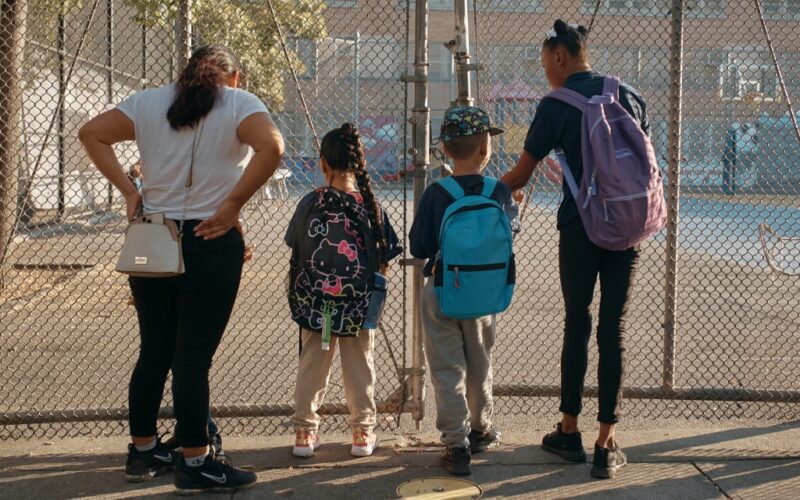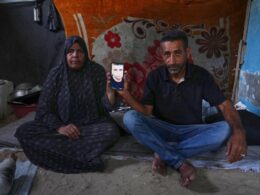An all-time high of 154,000 children in New York City’s public schools — nearly one in seven — were homeless during the past school year, according to data released Monday as the city reckons with a worsening affordability crisis.
Advocates for Children of New York, the author of the report, put the shocking new data in context this way: If the homeless students had their own school district, it would be one of the 20 largest educational systems in the country.
“There are now more students who are homeless in NYC than the entire Dallas public school system,” said Jennifer Pringle, a project director focused on students in temporary housing at Advocates for Children.
The consequences for a child’s education are profound. “This year alone, we’ve worked with families whose children already missed an entire month of school because of the lack of coordination between the shelter and school systems,” Pringle said.
Of the homeless students, 42% spent some nights or even the full school year living in homeless shelters, according to the report. More than half stayed with friends or extended family temporarily, often sleeping in tight quarters or on couches and floors. About 7,000 children did not have a roof over their heads or otherwise lacked a decent place to sleep.
Shutterstock
(Shutterstock)
In some neighborhoods, including East Harlem and the Bronx’s Concourse, the student homelessness rate climbed as high as one in five children. And in the throes of a migrant crisis that has since abated, Manhattan schools had the highest proportion of students in shelters.
Latoya Iheanacho shuttled with three of her children between shelters in the Bronx, Queens and Brooklyn, all within one year. Her husband left the family when daily tasks became “too much,” she said. “I didn’t have a choice to walk away.”
Each new shelter location posed a fresh challenge for Iheanacho and her children’s commute to Public School 219 in Crown Heights, Brooklyn. The school bus dropped the kids off late for class, and Iheanacho got a warning that she could be reported to child protective services for neglect. She quit her job in mental health care and brought them to school herself, waking up at 4 a.m. and, at one of the shelters, taking two subways and a bus.
It never felt like enough.
“They’re tired, they’re going to sleep in class,” Iheanacho said. “In the shelter, it was, ‘I’m going to sleep. I don’t even care about homework.’ ”
More than two in three students in homeless shelters were chronically absent in the 2023-24 school year, a slight increase from the year before, according to the new data. Their state test scores were about half that of their housed classmates.
And while a diploma can make a huge difference as to whether a child becomes homeless again as an adult, one in eight students in shelters dropped out of high school — three times the rate of their peers.
“Education is key to breaking the cycle of homelessness,” said Chyann Tull, a spokeswoman for the city’s public schools. “And we will continue to strengthen our trauma-informed, cross-agency, and data-driven strategies to help students and families thrive.”
Under Mayor Adams, the city has tweaked its education funding formula to send extra dollars to schools with high populations of homeless students. The city also provides enrollment and immunization assistance, shelter-based school staff and attendance programs that focus on resources for families, such as food and clothing.
Advocates want the city’s next mayor to go even further.
“Ensuring students who are homeless receive the support they need to be successful in school must be a top priority,” said Maria Odom, executive director of Advocates for Children.
Zohran Mamdani, the front-runner and Democratic nominee in the race for mayor, has pitched an expansion of a program that fosters relationships between homeless students and caring adults. Andrew Cuomo, the former governor polling behind Mamdani, has said he would prioritize schools with students in temporary housing for partnerships with community organizations.

Cayla Bamberger / New York Daily News
Zohran Mamdani speaks outside a public school in Queens on Sept. 4. (Cayla Bamberger / New York Daily News)
Advocates for Children is urging city agencies to work together to place children in shelters closer to school, address the high absenteeism rate and improve school bus service. The organization also called on state lawmakers to tweak the school aid formula, which despite recent adjustments still does not provide additional funding to support students in temporary housing. A bill to make that revision is under consideration in Albany.
Iheanacho received a housing voucher and moved into a small apartment in Jamaica, Queens. Her younger children enrolled in programs closer to home, while her older daughter travels an hour and a half so she can graduate with her friends. An eighth-grader, she’s reading on a second-grade level, but she is excited about math class and drawing.
The family fears landing back in the shelter system. Recently, there was a fire in the apartment above theirs and water sprinklers soaked their unit and possessions. On Wednesday, Iheanacho notified her security job of her plans to quit because of low pay and issues with her benefits.
“I wash clothes, the money gone. I can’t buy them a shirt or uniform because ain’t no money,” Iheanacho said. “I can’t live off of that.”








